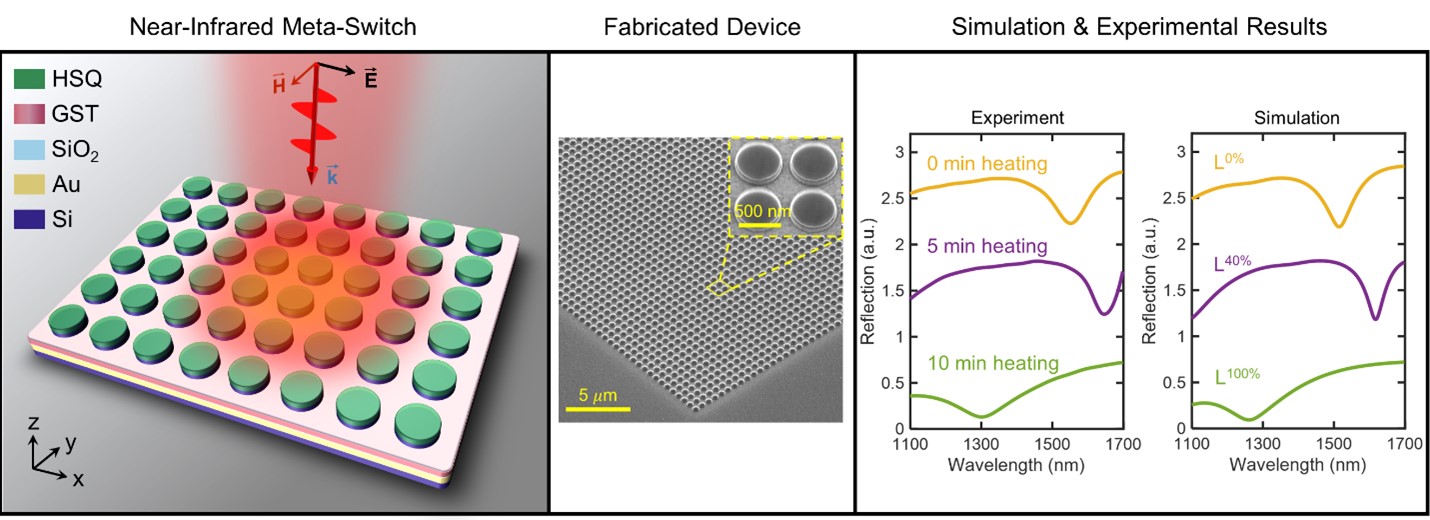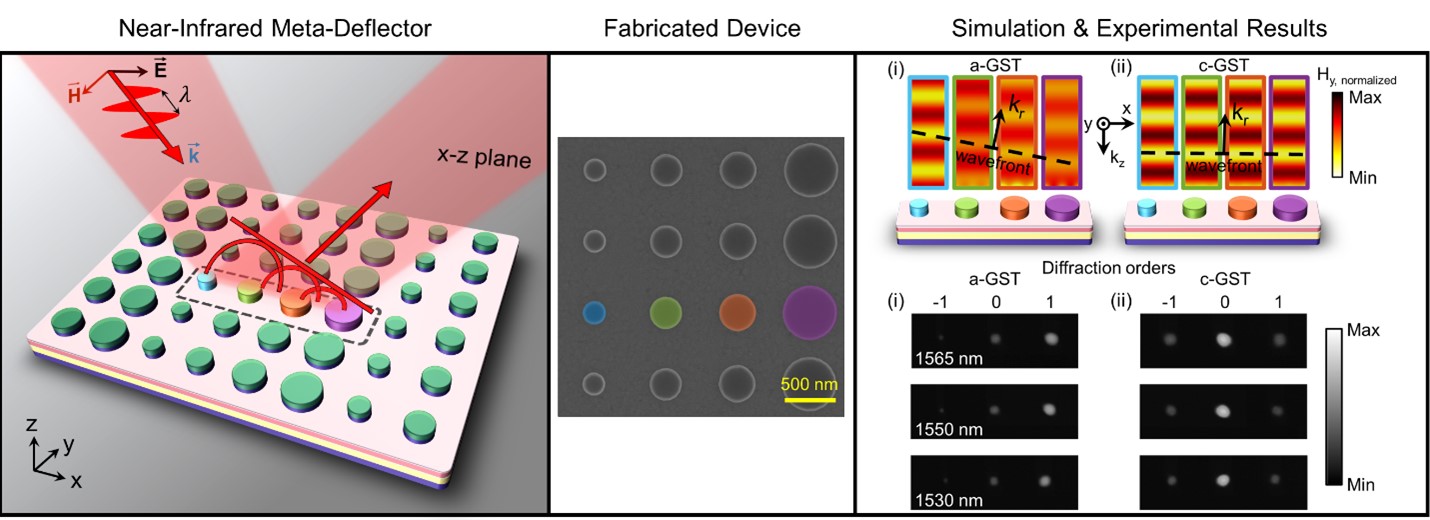This reconfigurable hybrid meta-surface platform incorporates the phase-change alloy germanium antimony telluride (GST) into metal-dielectric meta-atoms for active and non-volatile tuning purposes. The platform consists of a silicon (Si) nanostructure sitting on top of a GST or any other relevant phase-change material (PCM) layer deposited on an optically opaque gold (Au) back-reflector. The GST works as a functional dielectric medium whose optical properties can be tuned by applying a controllable external stimulus, such as a set of electrical pulses.
This Georgia Tech innovation lays a foundation for reconfigurable hybrid plasmonic-photonic meta-surfaces as promising candidates for the development of miniaturized energy-harvesting, optical-sensing, and imaging meta-systems. To determine feasibility, researchers experimentally demonstrated miniaturized tunable meta-surfaces that globally manipulate the amplitude and phase of incident light necessary for near-perfect absorption and anomalous/specular beam deflection.
Note: This innovation is related to technology 8437.
- Fast: Enables highly dense pixels with fast (nanosecond) switching capability
- Scalable: Can be fabricated with features down to nanometer sizes; the overall device can incorporate several meta-surfaces with different features over a large-size wafer
- Agile: Offers high switching robustness (up to 1012 cycles)
- Thermally stable: Withstands temperatures up to several hundred degrees
- Flexible: Adaptable with complementary metal oxide semiconductor (CMOS) technology
- Light detection and ranging (LiDAR)
- Infrared sensors
- Energy harvesters
- Computational meta-systems
- Hyperspectral imagers
- Optical computing (e.g., brain-inspired computing)
Well-engineered hybrid plasmonic-photonic platforms are necessary to simultaneously alleviate the intrinsic drawbacks and highlight the potential benefits of both metal-based and all-dielectric meta-surfaces. However, post-fabrication tunable hybrid meta-structures are limited by concerns regarding non-radiative losses, low-quality-factor modes, low damage thresholds, and restricted fundamental efficiencies.
New methodologies to make meta-surfaces programmable could revolutionize modern flat optics technology to surpass conventional spatial light modulators based on digital micromirrors and liquid crystal cells. This Georgia Tech innovation paves the way for dynamically tunable hybrid meta-surfaces.

Figure 1: Perspective view of a meta-switch illuminated by a broadband near-infrared light (left). Tilted SEM of the as-fabricated tunable meta-switch (middle). Simulated and measured spectral dependence of light reflection for three different crystallization levels (right).

Figure 2: Schematic representation of a meta-deflector illuminated by a laser light (left). Top view SEM of the as-fabricated tunable meta-deflector (middle). Wavefront evolution from a meta-molecule of the meta-deflector and measured normalized far-field reflection response of the fabricated device (right).
